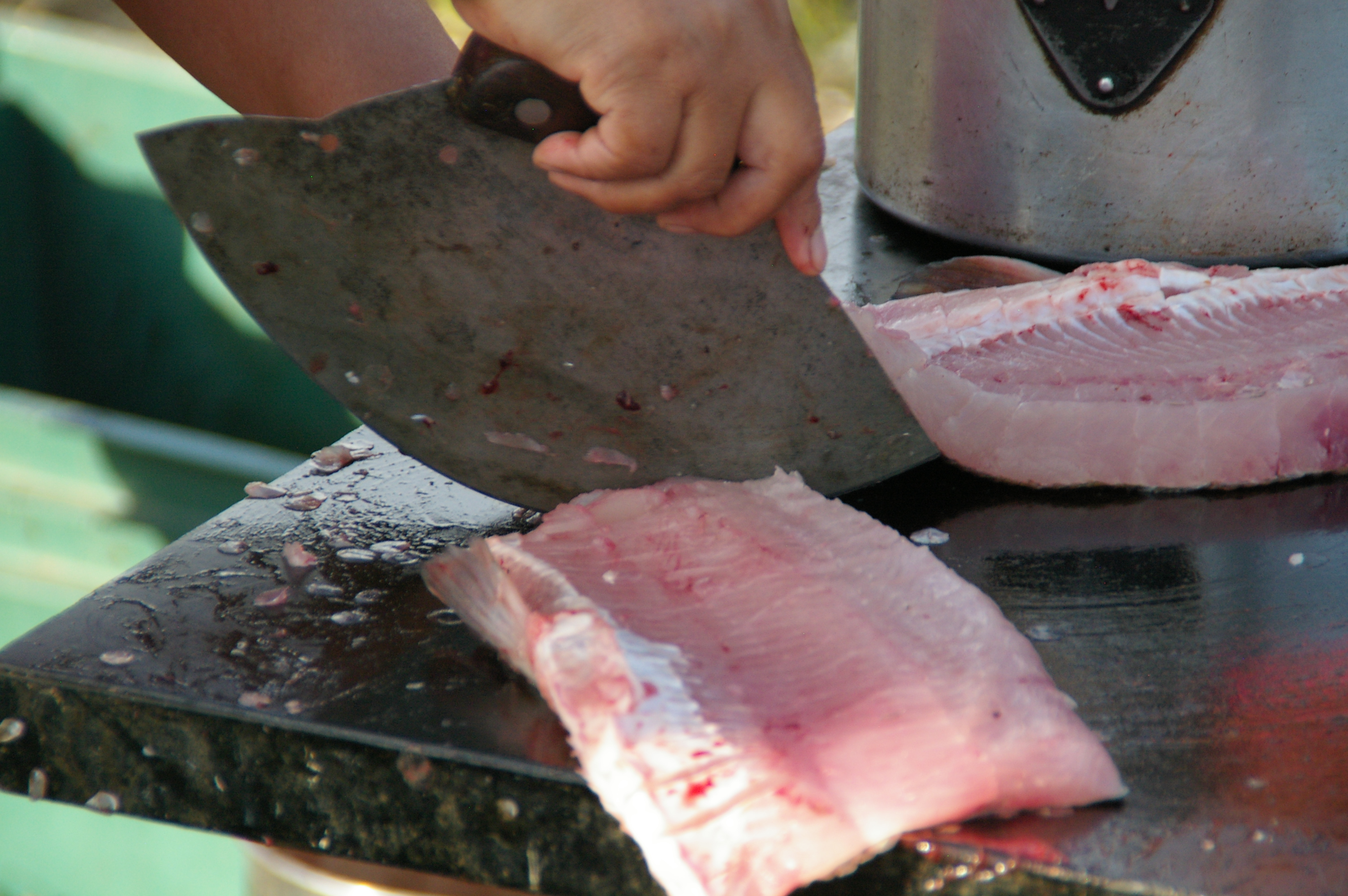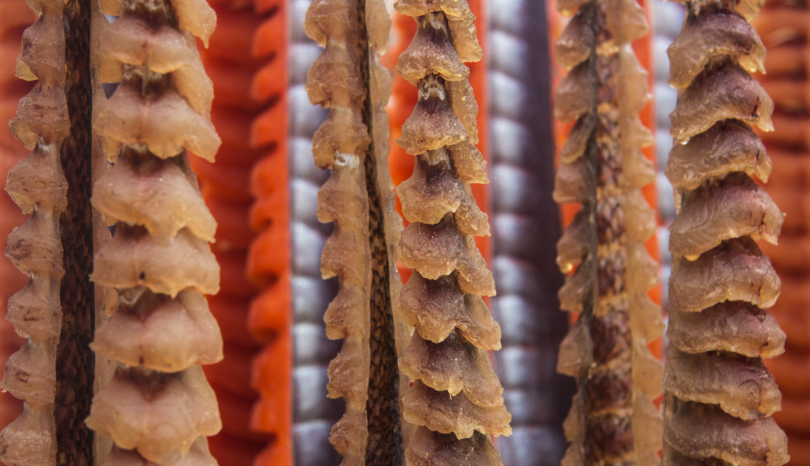Canada has the longest Arctic coastline in the world, stretching nearly 160,000 kilometres, from Baffin Bay in the East, through islands in the central Arctic Archipelago, to the Mackenzie River delta in the West.
These waters connect all four settled Inuit land claim agreement regions and provide habitat for most of the world’s beluga whales, narwhal, bowhead whales and polar bears, supporting some of the greatest marine mammal and seabird migrations on the planet.
Melting Sea Ice, New Threats
However, the Canadian Arctic marine environment is under pressure from a changing climate, increased shipping, commercial fishing and oil and gas development. Northerners also face limited economic opportunities and complex social problems that have held back the region’s potential.
Commitment to Conservation
As a signatory to the Convention on Biological Diversity, Canada has committed to protecting 10 per cent of its oceans by 2020. Prime Minister Justin Trudeau and former U.S. President Barack Obama agreed in their 2016 Joint Arctic Leaders Statement to create a new, ambitious conservation goal for the Arctic. Despite these encouraging commitments, meeting Canada’s goal in the Arctic will be difficult. While terrestrial protection is already at 10.9 per cent, 7.75 per cent of Canada’s three oceans are currently protected. In the Arctic, only 5.5 per cent of the ocean will be protected once the proposed Tallurutiup Imanga (Lancaster Sound National Marine Conservation Area) is finalized.
Conventional Tools for Marine Protection
Canada has three legal tools to protect marine areas, according to legal scholars:
- Marine protected areas (MPAs): The 1996 Oceans Act enables Fisheries and Oceans Canada to conserve important marine ecosystems and species or areas with high biodiversity as MPAs. To date, the agency has designated two MPAs in Canada’s North: Tarium Niryutait and the Anguniaqvia niqiqyuam, both in the Western Arctic’s Beaufort Sea. It has committed to developing a national network of marine protected areas based on 13 unique bioregions, six of which are located in Canada’s North. No formal negotiations have begun.
- National marine conservation areas (NMCAs): Parks Canada has the authority to designate protection of marine ecosystems through the National Marine Conservation Areas Policy (enacted in 1986, revised in 1994) and the corresponding Canada National Marine Conservation Areas Act (enacted in 2002). The law describes NMCAs as having a highly protected core area surrounded by sustainable management buffer zones. In 2017, Parks Canada released a feasibility assessment for Tallurutiup Imanga, a proposed NMCA in Lancaster Sound. That assessment was the result of six years of negotiation with Inuit. No other NMCA sites in the Arctic are in process.
- National wildlife areas (NWAs): In 1994, the Canadian Wildlife Act was amended to permit the Canadian Wildlife Service to create protected marine areas as part of national wildlife areas. The agency has established a number of NWAs in Nunavut with significant marine components, including: Nirjutiqavvik National Wildlife Area (Coburg Island), which protects a polynya adjacent to the North Water; Akpait National Wildlife Area, off the Cumberland Peninsula of Baffin Island; Ninginganiq National Wildlife Area, which protects bowhead whale habitat adjacent to Isabella Island near Clyde River; and Qaqulluit National Wildlife Area just north of the Cumberland Peninsula. No new negotiations for additional NWAs have been announced.
In the Arctic, these designations require federal agencies to negotiate directly with Inuit communities and land claims organizations. In some cases, these land claims contain strong conservation provisions that complement or even exceed federal law. For example, in Lancaster Sound, the proposed Tallurutiup Imanga NMCA can be seen as a confluence of the National Marine Conservation Areas Act empowering Parks Canada and the Nunavut Lands Claim, confirming the authority of Inuit negotiators.
Indigenous Protected Areas (IPAs)
The key to unlocking the potential for meeting conservation goals in Canada’s Arctic Ocean are the four Inuit land claims across the North. They provide additional legal capacity for conservation of important marine areas by directly involving Inuit communities in the nomination, selection, designation and management of ocean conservation areas.
Such indigenous marine protected areas were recommended in 2017 by Mary Simon, the Minister’s Special Representative on Arctic Leadership. Her final report described Indigenous protected areas as:
“…based on the idea of a protected area explicitly designed to accommodate and support an Indigenous vision of a working landscape. This kind of designation has the potential to usher in a broader, more meaningful set of northern benefits and bring definition to the idea of a conservation economy. For example, Indigenous protected areas have the potential to serve as a platform for developing culturally-appropriate programs and hiring of Indigenous peoples in a wide range of service delivery.”
In addition to the slow pace of conventional federal conservation, Simon’s report found that a crucial challenge to achieving marine protections in the North is that many projects do not contemplate the roles that community wellness, employment and prosperity play in environmental stewardship.
In her discussions with Inuit, Simon found that “there is an expectation that Arctic conservation is tied to building and maintaining strong and healthy communities.” To achieve such a result, Indigenous protected areas (IPAs) and Arctic coastal Guardians programs can build “protected area[s] explicitly designed to accommodate and support an Indigenous vision of a working landscape.”
Using an Ulu to prepare Arctic Char.
Credit: Henry Huntington

Using an Ulu to prepare Arctic Char.
Credit: Henry Huntington
Opportunities
Canada has the opportunity to significantly increase the number of protected marine areas in the Arctic. Oceans North supports Canada’s commitment to protect 10 per cent of its waters by 2020. To achieve this important goal, the full participation of Inuit is essential and required under land claims agreements. Canada can continue toward its marine conservation targets, in partnership with Inuit regions, by advancing protections for previously identified areas such as Tallurutiup Imanga and Pikialasorsuaq (the North Water Polynya). To truly unlock the potential of the region for conservation and jobs and meet the spirit and letter of Inuit land claims, Canada should consider a new Indigenous protected area policy for Arctic marine areas.

